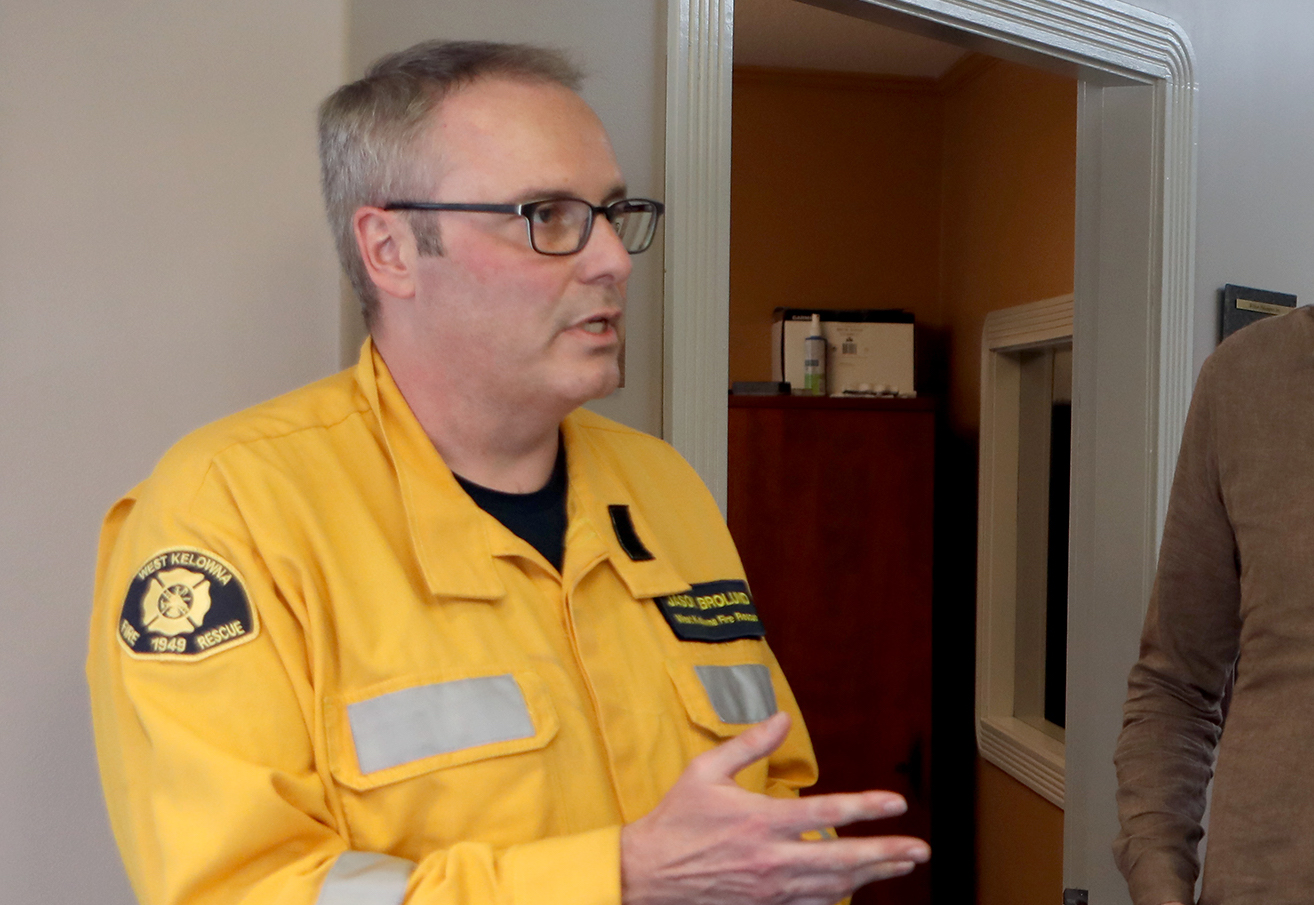Written by Cam McAlpine, APR.
When West Kelowna Fire Chief Jason Brolund stepped up to the microphone to provide an update on the McDougall Creek wildfire on Aug. 18, 2023, there were tears in his eyes and a tremor in his voice.
It was the first of about a dozen daily news briefings Brolund would give in the wake of the fire, a natural disaster that would ultimately claim over 300 structures and impact the lives of tens of thousands of residents of the idyllic Okanagan Valley in British Columbia.
“It was a devastating night last night,” Brolund began. “Probably one of the toughest of my career. It was one of the most challenging nights of firefighting in our history. Somebody described it to me last night in the heat of the battle as, it was like 100 years of firefighting all at once.”
Any leader who has been through a significant crisis will tell you the greatest challenge and the most important focus of an organization in crisis should be on the health, safety and well-being of people, property and community. But they will also tell you that it is also critically important to communicate about the crisis to ensure people impacted have the information they need.
Beyond the daily heroics of the firefighters who saved literally hundreds of homes from the McDougall Creek fire, it was fascinating, as a communications professional, to watch Brolund in his daily news briefings provide a master class in effective emergency communications. Part of me thought, the next time I teach crisis communications, I’ll probably just hit play on Brolund’s news briefings.
Here is what we learned from Jason Brolund about the six key ingredients to effectively communicating under fire.
1. Provide as much information as you are able as soon as you are able.
Focus on essential information. Keep it short, simple and understandable. Don’t sugarcoat. Share what you know when you know it. Give people as much information as possible, including what to expect in the future.
There was a significant number of structures that were lost last night, and we’re going to do our best to improve that, and take it from ‘significant’ to a number that means more to people. We’re also going to do our best to get people back to their homes. But that’s not going to happen quickly, either of those things. My people are strong, we’re going to be here for the long run. We’re going to prepare for it to be worse, and we ask the public to do the same.
2. Paint a picture.
Help your audience understand the gravity of the situation using all five senses. You need to communicate critical information. You may need to convince your audience to do something that they disagree with. They need to understand the why, and trust that you have their best interests at heart. The only way you can achieve that is to make them pay attention, and to bring them into the fire with you.
Last night I joined my men and women on the ground at about 2 a.m. and we undertook one of the biggest firefights I’ve ever been a part of. Night turned to day because of the orange glow of the clouds from the fire. The firefighters who fought that fire held that ground, they saved homes too numerous to list and I’m incredibly proud of the work that was done.
3. Be honest and transparent – even when you don’t know the answer.
While you may not have all the information – or even very much at all – don’t ever lie, dissemble, or avoid. Straightforward communication that acknowledges gaps in information, but commits to filling those gaps as new information becomes available, builds trust and credibility. Conversely, being dishonest will damage your credibility and your ability to connect with your audiences.
We knew that it was going to be bad. This is what we planned for and what we practised for, but it was exponentially worse than we had expected. We may have another scary night tonight. People are going to see that glow again and it’s going to look worse than you ever expected. But know that we’re there.
4. Be human.
Accept that a crisis brings an emotional response – in you and in your stakeholders. Don’t be afraid to show emotion. It builds trust and a connection between you and the audience.
This is who your fire department is. We live here. I employ a group of incredible professionals who are problem solvers, who love to be at work… who never fail to surprise me every day.
5. Demonstrate empathy.
In addition to expressing your own vulnerability, acknowledge the vulnerability in others. Your audience will be feeling a broad range of emotions, and possibly experiencing physical and psychological impacts. Make a connection with them. Let them know you understand and, more importantly, that you care and can empathize.
I’m still out of my house, as is my family. I’m feeling the same things you guys are. I’m running out of underwear, too, folks. I get it.
6. Say please. And thank you.
You’re going to be asking people to do things for you. To trust you. To have patience. Maybe even to leave their homes. Your mom was right: you’ll catch more flies with honey than with vinegar. Try asking instead of telling. And express gratitude.
It leads me to want to thank the public for their outpouring of support. It really is the fuel that keeps us all going. Being able to read your comments and the cards that you’ve dropped off and see the signs outside the fire hall is what fuels my men and women as well as all of the men and women who are involved.
On a lighter note, I do want to say, I’m doing fine for underwear.
